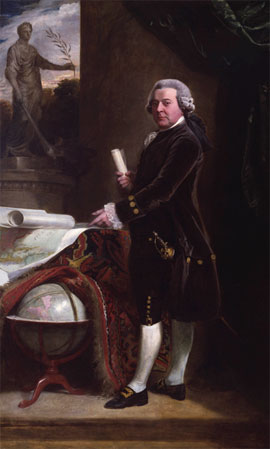The Signers John Adams

John Adams (1735-1826)
John Singleton Copley
London, 1783
Courtesy of
the Harvard University Portrait Collection
Bequest of
Ward Nicholas Boylston to Harvard College, 1828
John Adams
(1735-1826)
Hearing about the battles at Lexington and Concord in April 1775, John Adams saddled his horse and went to view for himself the devastation of war. These painful images were still in his mind a month later when he departed for Philadelphia and the Continental Congress. Within months he was to hear of the death of his brother, a captain in the militia. No stranger then to the consequences of war, Adams still felt that independence was the only solution to the colonies' problems. He persuaded Congress of the need for a Declaration of Independence on the practical grounds it would unite the colonies, divide England, stimulate support for the Revolution, and attract European allies.
"He supported the Declaration with zeal and ability, fighting fearlessly for every word of it," wrote Jefferson to James Madison in 1783.
